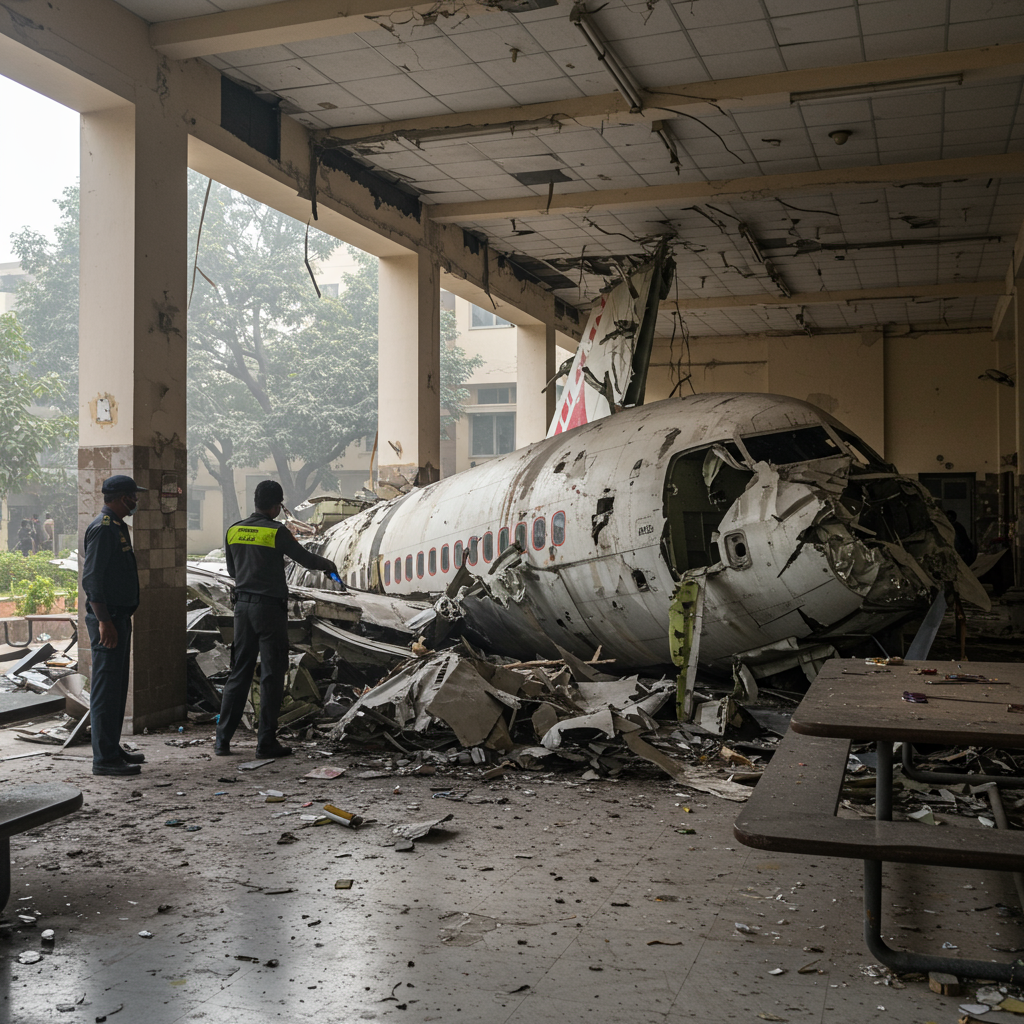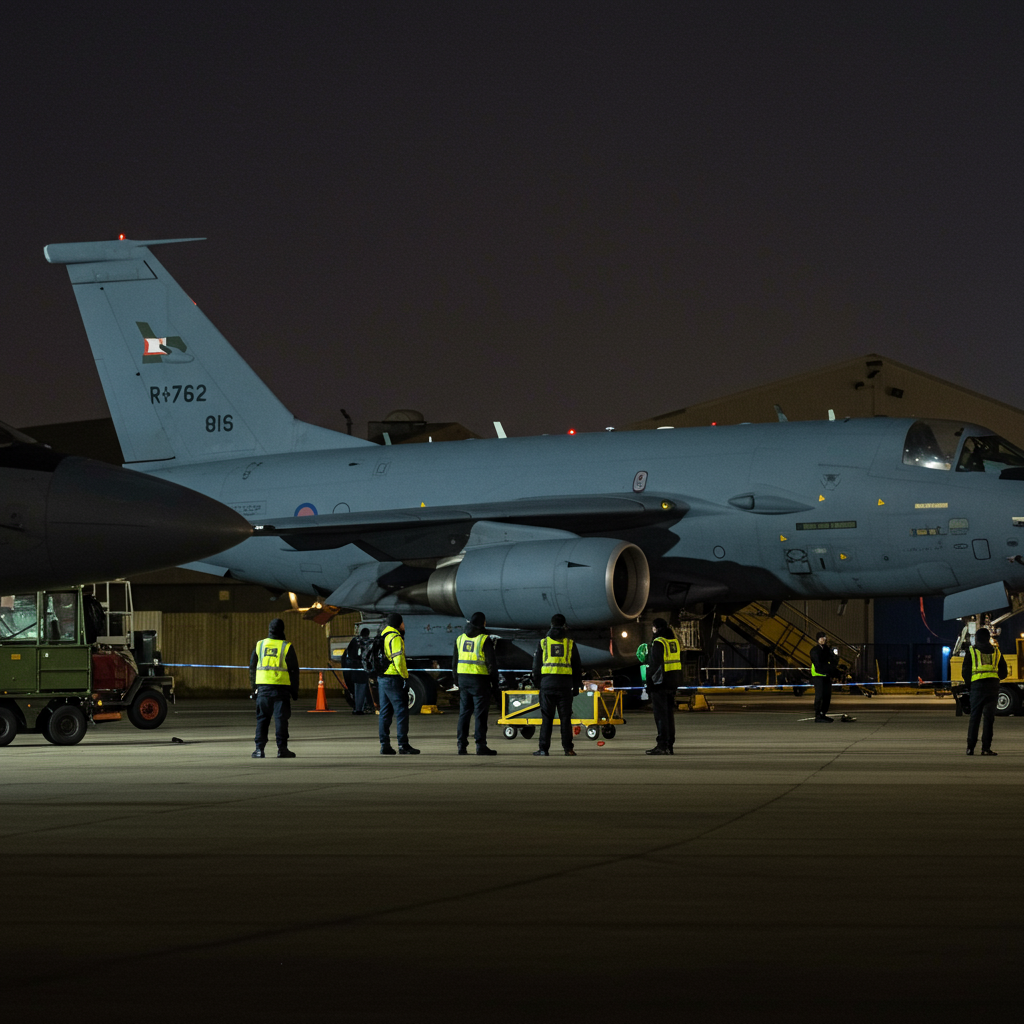A Normal Afternoon Shattered by Tragedy
It was a typical Thursday afternoon at the Byramjee Jeejeebhoy Medical College residential hostel in Ahmedabad, India. The college canteen, usually a lively hub, was bustling with students, doctors, and their family members gathering for lunch around 13:39 local time. The air was filled with the sounds of laughter, friendly banter, and academic discussions among the estimated 35 people inside. Some had already collected their food and settled down, while others waited patiently in line.
The scene of everyday normalcy was abruptly and terrifyingly shattered. The general hum of conversation was suddenly drowned out by the deafening roar of approaching jet engines. Within moments, the room exploded in a catastrophic impact.
Seconds from Disaster: The Crash of Flight AI171
Less than a minute earlier, Air India Flight AI171, a Boeing 787-8 Dreamliner bound for London carrying 242 people, had taken off from Ahmedabad’s Sardar Vallabhbhai Patel International Airport, located just 1.5 kilometres (under a mile) away. Data later revealed the aircraft reached a maximum height of only 625 feet (190m) and was airborne for a mere 30 seconds before descending rapidly. A mayday call was transmitted from the cockpit as something went catastrophically wrong, but no further communication followed.
The ill-fated jet plunged into a busy residential area, impacting directly onto the doctors’ hostel building. The resulting crash ignited a massive fireball, sending shockwaves through the community. Tragically, 241 of the 242 people on board perished.
Eyewitnesses Recount the Chaos
The immediate aftermath on the ground was one of utter chaos and confusion. Doctors in a nearby building, 500 metres away, initially mistook the “deafening sound” for lightning, only to realize the horrifying truth moments later when screams directed them to the scene: “Look, come here, a plane has crashed into our building.”
Brothers Prince and Krish Patni were on their bikes just metres from the hostel when they heard the noise. “Within seconds we could see something that resembled a wing of a plane,” Prince recounted. They rushed towards the building but were initially driven back by the intense heat of the explosion and thick debris. Working alongside police and other volunteers, they helped clear the entrance, even removing cooking gas cylinders to prevent secondary blasts.
Entering the smoke-filled canteen, the scene was harrowing. The air reeked of burned metal. Amidst the charred wreckage, they found survivors badly injured but eerily silent, seemingly frozen in shock. Many still held spoons of food, plates, or glasses – they had had no time to react to the sudden, violent end to their afternoon meal.
A second-year student who survived the crash, trapped under debris at his usual table spot, described a “huge bang and a horrible screeching sound.” He was trapped by “huge boulders” with fire and smoke close to his face, making breathing difficult. He suffered severe chest wounds and remains in hospital, unaware of the fate of his friends who were with him. Multiple eyewitnesses confirmed that a massive wing of the Dreamliner first tore through the roof, followed by parts of the fuselage, causing the most severe destruction where the wing hit. Desperate to escape the collapsing structure, some students reportedly jumped from the second and third floors as debris blocked a key staircase.
The Heavy Toll on the Ground
The crash inflicted a devastating human cost on the ground. While the exact number of fatalities is still being determined, Dr. Minakshi Parikh, dean of the BJ Medical College, confirmed the deaths of four students and four relatives of students or doctors who were in the canteen.
Identifying the victims, both from the plane and on the ground, has been an agonizing process. Authorities informed families that DNA matching would be required due to the severity of the remains, many of which were charred beyond recognition by the intense fire. This process, which normally takes about 72 hours, has faced delays as search teams continue to look for remains and forensic experts work carefully in small batches to ensure accuracy, sometimes relying on dental records when DNA is damaged by heat.
The tragedy extended beyond those physically present in the canteen at the moment of impact. Ravi Thakur, a hostel kitchen worker who was out delivering lunch, returned to find utter devastation and has been desperately searching for his mother, who remained behind at the hostel, with hopes fading. Similarly, the family of local music producer Kartik Kalawadia searches for his brother Mahesh, whose phone became unreachable after he was reportedly near the crash site, leaving his family in anguish as he seemingly “vanished into thin air.”
For the college community, the loss is deeply personal. Professors mourn the students they knew and taught, while prioritizing care for the injured survivors recovering in the hospital.
Investigation Begins: Searching for Answers
A high-level investigation into the cause of the Air India Dreamliner crash is underway, involving experts from India’s Aircraft Accident Investigation Bureau (AAIB), the US National Transportation Safety Board (NTSB), and the UK. Recovery of one of the crucial black boxes (flight data recorders) is a key step in understanding the final moments of Flight AI171.
While the official cause has yet to be determined, aviation experts and pilots have speculated on potential factors based on limited data and verified video footage showing the plane struggling shortly after take-off at a low altitude and speed. Possibilities under consideration include:
Double Engine Failure: Though exceptionally rare, simultaneous failure of both engines could be a cause, potentially due to factors like fuel contamination.
Bird Strike: Ahmedabad airport is known for bird activity, and a severe bird strike impacting both engines could lead to a catastrophic loss of power, especially at a low altitude.
Flaps Configuration Error: Experts have noted that footage appears* to show the aircraft’s wing flaps not fully extended during take-off. Flaps are critical for generating sufficient lift at low speeds and with a heavy load, particularly in hot conditions like Ahmedabad (nearly 40°C), where thinner air requires higher performance. An incorrect flap setting could severely hinder lift-off, although the 787 is equipped with a warning system for such errors.
These remain potential scenarios, and the investigation will rely on detailed analysis of the recovered black box data, debris examination, and cockpit voice recordings to establish the definitive sequence of events.
In the wake of the disaster, India’s aviation regulator has ordered safety checks on Air India’s entire Boeing 787 fleet and implemented additional checks on take-off parameters for all 787 departures.
An Ongoing Ordeal
The crash of Flight AI171 into the BJ Medical College canteen was a sudden and horrific tragedy that turned an ordinary afternoon into a scene of devastation. While emergency services, locals, and Air India staff worked through the wreckage, the long and painful process of identifying victims, supporting survivors, and uncovering the cause of the crash has just begun, leaving families grappling with unimaginable loss and uncertainty. Tata Group, Air India’s owner, has announced compensation and support for the victims’ families and assistance for rebuilding the damaged hostel. The incident serves as a stark reminder of aviation risks and the profound impact on communities when disasters strike close to home.




